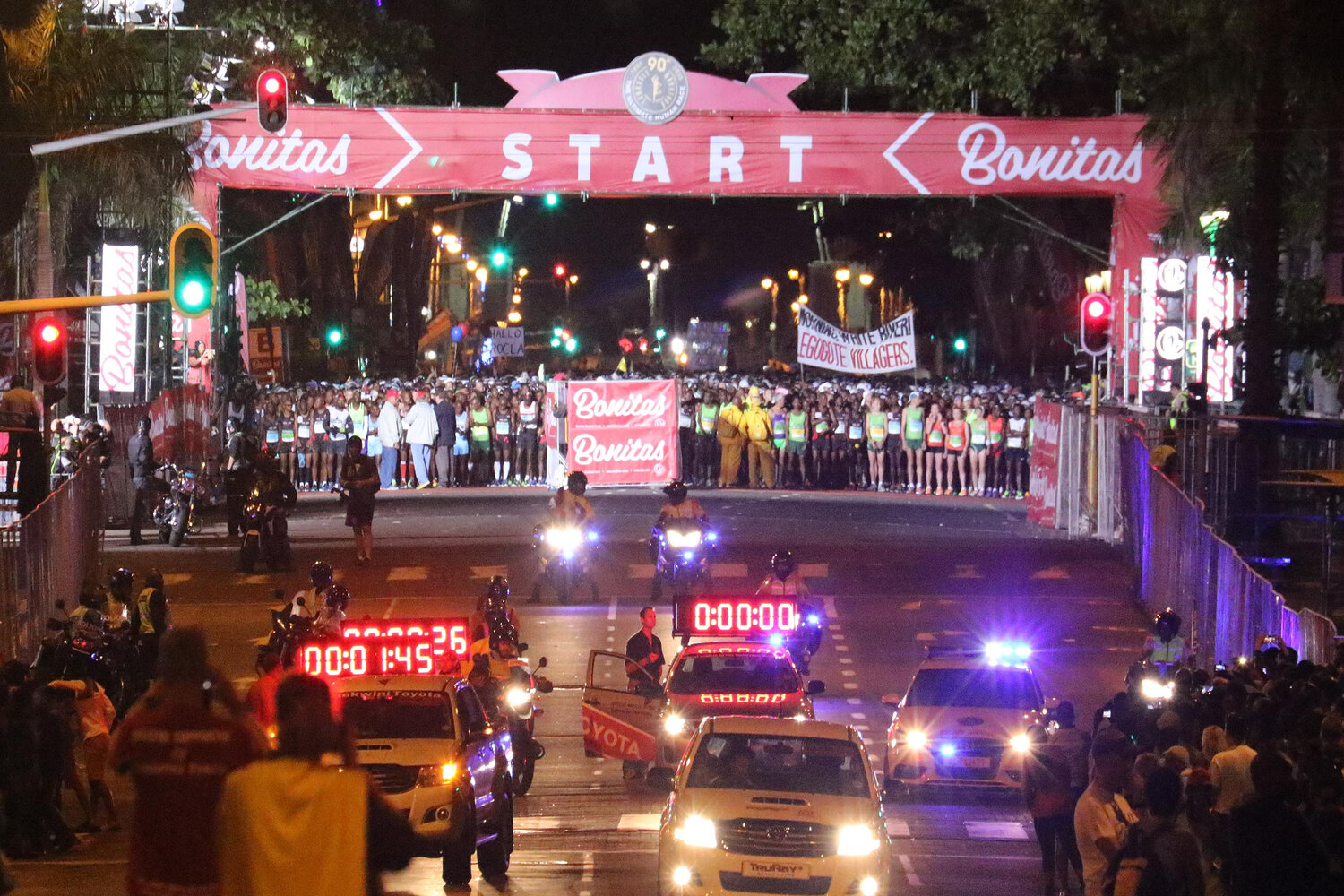Repeat after me: “I want to write my paragraph in the history of this great race, and I am not 'anybody'."

It is important for novices to start the Comrades journey very slowly and cautiously. Picture: Anesh Debiky/Gallo Images
No one sleeps well the night before the Comrades marathon. And tonight, Saturday night, 27 August will be no exception, as thousands of Comrades runners try counting sheep while their nerves are jangling, and the butterflies in their stomach are more like angry swarms of bees.
It won’t help that they will be sleeping in strange beds, with different pillows, while being continually disturbed by runners in the neighbouring rooms who keep flushing the loo and switching their lights on and off as they prepare their running gear for race morning.
ALSO READ: Comrades focus: Start visualising your success
I used to shut my eyes quite tightly and try to force myself to sleep but under my closed eyelids my eyeballs were wide open and staring and my mind would already be racing wondering which race tactics I should employ the next morning. How fast should I start, what time should I run through Drummond (halfway)?
I would take comfort from the old timer’s advice that sleep the night before the race is not as important as sleep “the night before the night before”. In other words, the quality of Friday night’s sleep is what really matters for Comrades novices.
I took further comfort from my strongly held belief that it was important to enjoy the Comrades experience as much as possible and to have as much fun as possible. The words “relax” and “have fun” were always written on my hands in indelible ink so that I would be reminded as I ran and glanced down at my hands, that I shouldn’t take things too seriously.
I always started every Comrades marathon very cautiously and I cannot over-emphasise that the best way for novices to start their first Comrades is slowly and wisely
Comrades does not reward the brave and bold, it rewards the meek.
Starting like a coward means starting cautiously, holding back, treating the challenge with enormous respect and keeping uppermost in mind that ahead lie 90 brutal hilly kilometres.
The start of the Comrades marathon is extremely emotional, and it is alarmingly easy to get carried away. The national anthem, Shosholoza, Chariots of Fire and Max Trimborn’s cockerel crow all conspire to get the pulse pumping and the adrenalin flowing and the sight of thousands of runners streaming off can lure many novices to start far too quickly.
In the early stages of the race novice runners should try as hard as possible to hold back, and to rein in their enthusiasm, to camouflage themselves as quiet shadows. The first 20 kilometres should feel very easy, runners should feel that they are floating along almost as if in a dream.
Every downhill should be treated with respect, particularly that early steep descent down the 2-kilometre-long Polly Shortts. Too many runners attack Polly Shortts, surging down the hill while cracking jokes about how little they have to fear from that monster hill. They have much to fear.
It is vital to preserve and nurse the quadriceps muscles on every downhill because those quadriceps are going to be desperately needed in the closing stages of the race. No one should attack a downhill, runners should float down the hills, letting gravity do the work.
Comrades runners must ignore all the distance markers in the early to middle stages. They are meaningless and they are powerful motivation killers. Sadistically, the distance markers at Comrades are placed in descending, reverse order so at Polly Shortts, runners will pass a distance board that signals “80 kilometres to go”, much later they will pass another “67 kilometres to go”.
What does that mean? It just means it is still incredibly far to run. Runners should run the race from landmark to landmark. Get rid of Polly Shortts, run through Camperdown Village, Cato Ridge and Harrison Flats. Conquer Inchanga Hill.
With 21 kilometres to go the distance markers become useful tools. Now the distance left to run is realistic, the familiar (10 kms to go, just my morning run, 5kms to go, just a parkrun).
Runners should slog on by feeding off the energy of the spectators, they are some of the most enthusiastic supporters you can meet. Relish the race traditions (remember to greet Arthur Newton, and doff your cap with the greeting “Good morning Arthur when passing Arthur’s seat). Admire the Wall of honour, novices pick the spot for your plaque on that wall.
And when it gets tough, as it will do (the humidity and rolling hills of Pinetown with 19kms to go is a particularly gruelling stretch), runners should tell themselves that if it was easy anybody could do it. They should mutter this mantra to themselves “I want to write my paragraph in the history of this great race, and I am not “anybody”.
Finally runners, but particularly novices, should try and freeze a moment, a memory or two from the end of the race so that if ever they are feeling depressed, lonely, or disappointed with themselves they can take their minds back to that moment and defrost it and remind themselves: “I once ran the Comrades marathon.“
Download our app